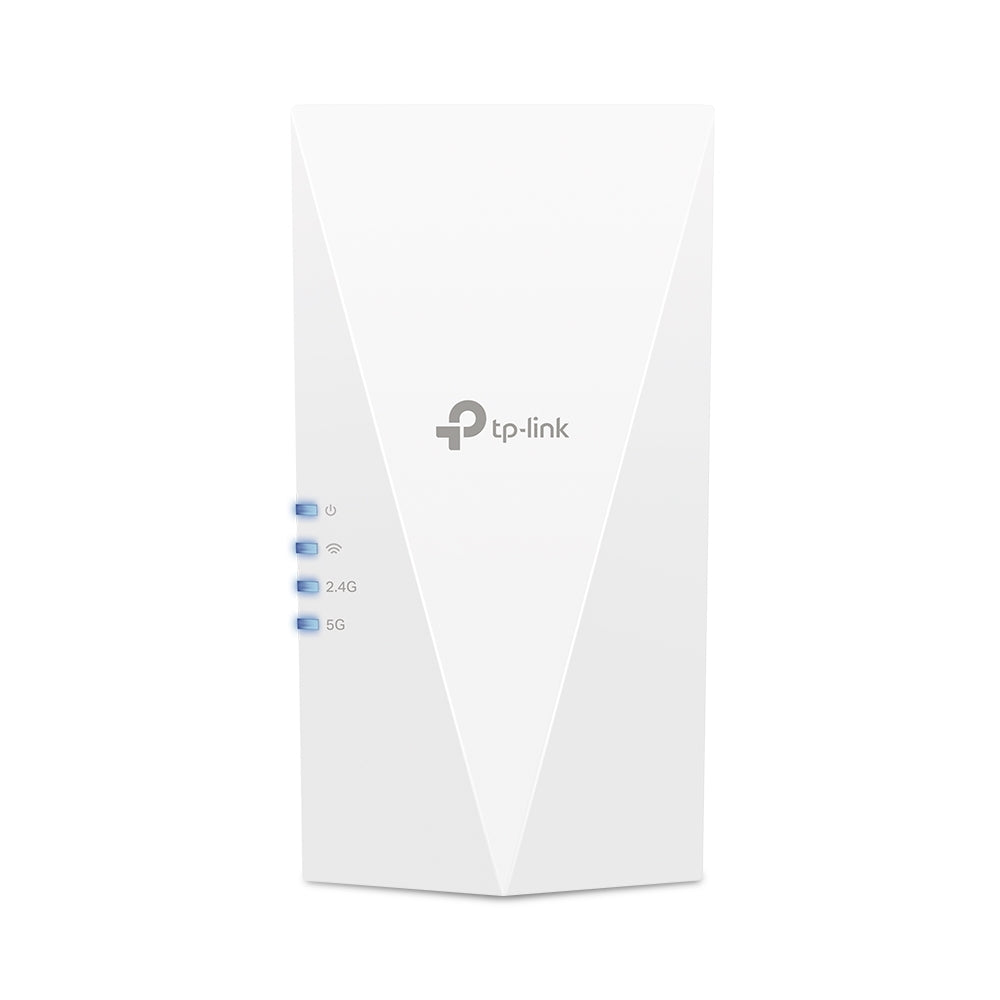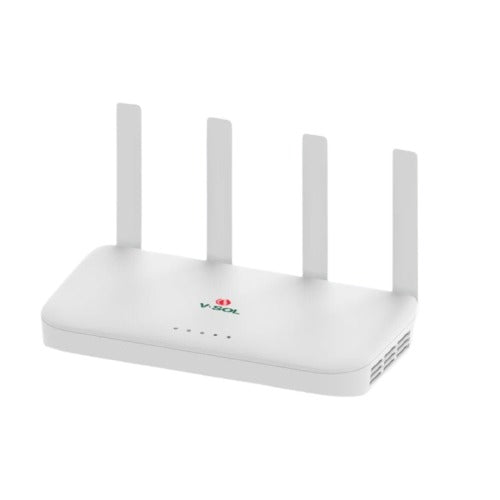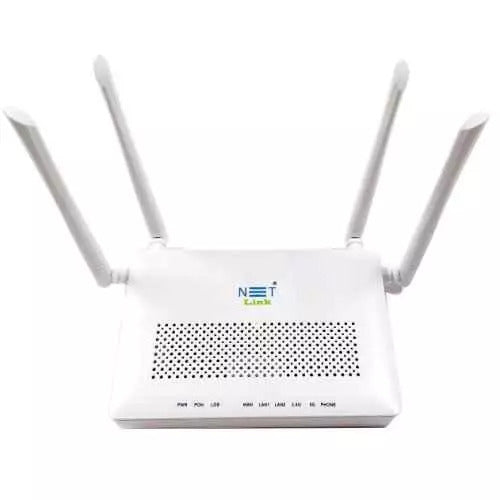
Wi-Fi 6 ONT - Bandwidth Demands and Congested Networks
Come up with an interesting intro
Wireless advancements have brought about a remarkable shift in our capability to communicate and interact with the world smoothly and uninterruptedly. With the rising reliance on wireless networks, there is an accompanying requirement for swifter speeds, greater capacity, and enhanced overall performance. Wi-Fi 6 ONT (Optical Network Terminal) is the ultimate solution to address the challenges of congested networks and growing bandwidth demands.
A guide to understanding the Wi-Fi 6 standard

Wi-Fi 6, also referred to as 802.11ax, represents the epitome of state-of-the-art wireless technology. It introduces significant advancements in speed, safety, capacity, and efficiency compared to its predecessors. With Wi-Fi 6, users experience faster downloads, smoother streaming, and enhanced connectivity, even in dense environments. Wi-Fi 6 users in several new features and advantages that will have a significant impact on the wireless experience. It incorporates technologies like Orthogonal Frequency Division Multiple Access (OFDMA), Target Wake Time (TWT), and Multi-User Multiple Input Multiple Output (MU-MIMO) to deliver higher efficiency, reduced latency, and improved performance. These characteristics lead to enhanced velocity, expanded capability, and improved connectivity for all devices within the network.
Wi-Fi 6 - Technical Dimensions and Features
Wi-Fi 6 encompasses all 802.11ax features and functionalities. The device operates in the 6GHz band, however. The implementation of low-latency and high-bandwidth applications on wireless devices connected to sixth-generation AAPs, 802.11ax extends beyond simply integrating cutting-edge technologies to enhance network speed and overall performance. Wi-Fi 6 introduces seven 160 MHz channels in the 6 GHz band and total of 14, 80 MHz channels in the 7 GHz band, resulting in expanded capacity. Additionally, Wi-Fi 6 delivers enhanced power efficiency, leading to more efficient power usage. Furthermore, the BSS colour identifier will serve to distinguish between different basic service sets in the 802.11ax network. To avoid disruptions caused by nearby wireless networks, ensure that the wireless signal is clear and uninterrupted.
You have the option of establishing a connection between smart devices and a wired network using a Wi-Fi 6 wireless access point (WAP 3). This approach offers a more convenient and straightforward solution compared to the complexities of wiring and connecting each device and computer in your network. Most convenient is the ability to extend Wi-Fi 6 signal strength and range using a WAP. The result will be the elimination of 'dead spots.'To connect to Wi-Fi 6 networks, many inexpensive access points are available. It is possible to use all of Wi-Fi 6's technologies, including MU-MIMO and OFDMA, with these access points.
Does Wi-Fi 6 have a better range?
While Wi-Fi 6 is designed to improve network capacity and efficiency, it operates at a lower frequency band range of 6 GHz (5925-7125 MHz). This enhancement has significantly bolstered network capacity and performance. This upgrade has led to a substantial advancement in both network capacity and performance. When there is an obstacle between the router and the device, the chances of signal interruption increase significantly.
How Wi-Fi 6 Differs from Previous Generations?
Numbers higher, performance better
Wi-Fi 6 builds upon the progress achieved in earlier versions including Wi-Fi 5 (802.11ac) and Wi-Fi 4, elevating the wireless networking standard to new heights in terms of strength and efficiency. It improves upon the shortcomings of earlier versions by introducing advanced technologies and standards. Wi-Fi 6 significantly improves the overall efficiency of networks, allowing for a higher capacity of simultaneous connections and ensuring a superior user experience in crowded settings.
The latest Wi-Fi 6 standard introduces a range of enhancements that enhance performance and better cater to the requirements of a wide array of devices, spanning from tablets, smartphones, and laptops to thermostats, smartphones, and video cameras. Getting the most out of the changes will require both Wi-Fi 6 routers and devices. While Wi-Fi 6 maintains backward compatibility with Wi-Fi 4 and Wi-Fi 5 devices, its complete capabilities are realized when paired with Wi-Fi 6-enabled equipment.
Certainly! Here's a comparison table highlighting the key differences between Wi-Fi 6 and previous generations:
|
Feature |
Wi-Fi 4 (802.11n) |
Wi-Fi 5 (802.11ac) |
Wi-Fi 6 (802.11ax) |
|
Bandwidth |
Up to 600 Mbps |
Up to 1.3 Gbps |
Up to 9.6 Gbps |
|
Frequency |
2.4 GHz, 5 GHz |
5 GHz |
2.4 GHz, 5 GHz |
|
Multi-User Support |
No |
No |
Yes |
|
OFDMA Support |
No |
No |
Yes |
|
MU-MIMO Support |
No |
Yes |
Yes |
|
Concurrent Connections |
Up to 20 |
Up to 100 |
Up to 256 |
|
Range |
Standard |
Improved |
Improved |
|
Power Efficiency |
Standard |
Improved |
Improved |
|
Dense Environment Support |
No |
Limited |
Enhanced |
|
Backward Compatibility |
Yes |
Yes |
Yes |
Increased connectivity and performance
With the advent of Wi-Fi 6 ONT (Optical Network Terminal), modern networks have witnessed a significant boost in connectivity and performance. Wi-Fi 6 ONT leverages advanced technologies such as Orthogonal Frequency Division Multiple Access (OFDMA) and Multi-User Multiple Input Multiple Output (MU-MIMO).
In addition, it increases data throughput and improves spectral efficiency. This technology leads to quicker and more dependable wireless connections, facilitating uninterrupted streaming, gaming, and demanding data applications. The enhanced connectivity of Wi-Fi 6 ONT caters to the growing demands of today's connected devices and provides a superior user experience.
Future-Proofing Networks and IoT Integration
The inclusion of Wi-Fi 6 ONT is vital for ensuring networks are prepared for the future and enabling the seamless incorporation of Internet of Things (IoT) devices. With its support for a larger number of simultaneous connections and improved power efficiency, Wi-Fi 6 ONT enables networks to handle the ever-increasing IoT ecosystem.
This technology ensures that networks accommodate the growing number of smart devices, sensors, and automation systems, paving the way for a more interconnected and intelligent environment. By seamlessly integrating IoT devices, Wi-Fi 6 ONT lays the foundation for the evolution of smart homes, smart cities, and industrial automation, enhancing efficiency and productivity across various sectors.
How Wi-Fi 6 ONT Router Enhances Network Efficiency?
A Wi-Fi 6 ONT router is specifically designed to leverage the capabilities of Wi-Fi 6. It employs advanced technologies like OFDMA and MU-MIMO to distribute the network resources efficiently, minimizing interference and maximizing throughput. This results in a more reliable and efficient network, even in congested environments.
OFDMA (Orthogonal Frequency Division Multiple Access) - Wi-Fi 6 introduces OFDMA, which allows the router to divide a channel into smaller sub-channels, called Resource Units (RUs).
Each RU will be allocated to a different device or group of devices, enabling simultaneous communication with multiple devices in parallel. This technology reduces latency and improves overall network capacity, especially in environments with many connected devices.

MU-MIMO (Multi-User Multiple Input Multiple Output) - Wi-Fi 6 ONT routers support MU-MIMO technology, which enables the simultaneous transmission of data to multiple devices. With MU-MIMO, the router communicates with multiple devices in parallel, allowing for more efficient use of available bandwidth. This technology is particularly beneficial in environments with multiple devices, such as households or offices, where simultaneous connections are common.
Sometimes it happens like this!
A few of the Wi-Fi 6 ONT routers lead to performance inconsistencies, latency, or lag issues. While Wi-Fi 6 technology aims to enhance network performance and decrease latency, various external elements like network congestion, interference, or device compatibility still impact the overall effectiveness.
In some situations, users may experience occasional lag or lag, especially if they are operating in densely populated areas with multiple connected devices. Additionally, if not properly configured or optimized, Wi-Fi 6 ONT routers may not deliver their full potential, leading to poor performance.
Real-World Examples and Resolving Congestion
By using of Wi-Fi 6 ONT router, I found a certain lagging issue while connecting multiple devices. So, I searched the product list without delay and found a great product from grabnpay.in website which was VSOL XPON ONT HGU-4GE-1 POTS for high-speed internet connection and seamless data transfer. As networks become increasingly congested and it is critical to find a reliable one that meets these growing bandwidth requirements.
Enter the VSOL-XPON ONT (Optical Network Terminal) - a state-of-the-art device designed to address the challenges that fixed network operators face in delivering high-end FTTH (Fibber to the Home) and triple-play services. So I bought the product and after that, I have no lag in connecting the network and it works without any delay. It could be the ultimate solution for congested networks and bandwidth demands. Here are some futures of this VSOL-XPON ONT:
Enhanced Connectivity with XPON Dual-Mode Technology
The VSOL-XPON ONT sets itself apart with its XPON dual-mode technology, supporting both EPON (Ethernet passive optical networking) and GPON (Gigabit Passive Optical Network). This means that network operators have the flexibility to adapt their infrastructure to meet evolving demands seamlessly. Whether transitioning from EPON to GPON or vice versa, the VSOL-XPON ONT ensures compatibility and a smooth upgrade process, minimizing disruptions for users.
With the integration of IEEE802.11b/g/n/ac/ax Wi-Fi 6 technology, the VSOL-XPON ONT takes connectivity to a whole new level. Wi-Fi 6 offers remarkable improvements in speed, capacity, and overall network performance. Users enjoy faster downloads, smoother streaming, and enhanced online gaming experiences, even in areas with heavy network congestion.
Efficient Network Management with OAM/OMCI Protocol
Additionally, Managing and configuring the VSOL-XPON ONT is a breeze, thanks to its support for the OAM/OMCI protocol. The terms OAM (Operations Administration and Maintenance) and OMCI (Optical Network Termination Management and Control Interface) are interchangeable.
This protocol allows network operators to easily configure and manage various services of the ONT using the VSOL OLT. With streamlined management processes, operators optimize network resources and ensure efficient operation, all while reducing the need for extensive technical support.
Connecting with Multiple Devices Easily
The VSOL-XPON ONT HGU-4GE-1 POTS model is equipped with a comprehensive range of interfaces to cater to diverse connectivity needs. This networking device offers versatile connectivity options, allowing users to connect to various devices simultaneously using its 1XPON port, 4 Gigabit Ethernet ports, 1 POTS port, and a USB 3.0 port. From smart TVs and gaming consoles to VoIP phones and printers, the VSOL-XPON ONT ensures efficient data transfer and seamless internet access.

Robust Security for Peace of Mind
The VSOL-XPON ONT prioritizes network security, protecting users' data and devices. Its built-in safety firewall features Anti-DDOS capabilities and filtering based on ACL (access control list), MAC (media access control address), and URL (Uniform Resource Locator). This multi-layered approach safeguards against malicious attacks and unauthorized access, ensuring a secure and reliable network environment.
VoIP to Provide HD Voice & Video Calling
It enables HD voice and video calling through VoIP technology, delivering exceptional audio and video quality for communication needs. With its advanced features, it ensures seamless and immersive communication experiences, enhancing productivity and user satisfaction.
Conclusion
Wi-Fi 6 ONT is a game-changer for modern networks. It offers enhanced connectivity and performance, future-proofing networks for the growing IoT ecosystem. Using advanced technologies like OFDMA and MU-MIMO will efficiently distribute network resources. To resolve those intermittent lagging and network congestion issues, choose a reliable product like the VSOL-XPON ONT.



















